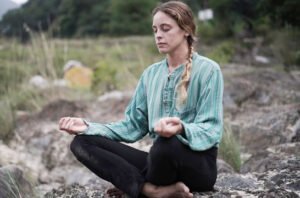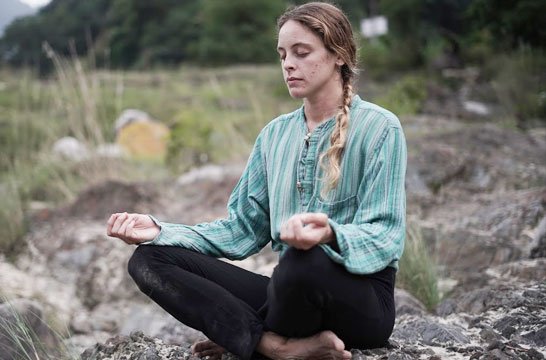What exactly pranayama is?
Pranayama is an ancient breathing technique, that originates from the ancient spiritual practices in India. You have to mainly control the breath for different periods of time, as a part of this practice. Moreover, the inhalation, retention and exhalation styles also differ from one Pranayama to another. It has lots of health benefits, that has led to its immense popularity.
It is a part of the 8-limbed yoga dimension called Ashtanga Yoga. Pranayama happens to be the fourth one. According to Pranayama, it is the power of your mind, which breathing techniques impact directly. The words can be divided into two, Prana and Ayama. Prana relates to the life force and Ayama means expansion. Through Pranayama you can control all the inner forces.
Read More: Why Is Kundalini Yoga Dangerous? The Truth About Its Risks and Rewards

Anatomical Aspect of Lungs
In order to understand about the working of the lungs which is one of the main organs involved in Pranayama, you need to know about its anatomy. The lungs are a pair of spongy bags or air sacs, that are located on either side of the sternal plate. The trachea carry air inside the lungs, and then the air is distributed through the bronchi, and bronchioles inside the lungs. The bronchioles culminate in air sacs called alveoli. The blood absorbs the oxygen from the alveoli. The carbon dioxide which is a waste product moves into the alveoli and is carried towards the trachea, and finally released outside. A thin membrane called pleura covers the lungs and also the interior of the chest cavity.
When it comes to breathing, there are three processes that take place inside the body cavity. They are:
- Clavicular Breathing
- Diaphragmatic Breathing
- Abdominal Breathing
Role of Diaphragmatic Breathing
This is the breathing practice, that involves the expansion and contraction of the diaphragm. It is the muscle, which is located horizontally between the abdominal cavity and the thoracic cavity. When the diaphragm contracts, air enters the lungs and when it expands the air leaves the lungs. This is the type of breathing, which involves maximum oxygen exchange. Moreover, this type of breathing slows the heartbeat and also lowers the blood pressure. Moreover, it is very important for all those who have COPD or chronic obstructive pulmonary disease. In the case of COPD, air is sometimes trapped in the lungs. This keeps the diaphragm pressed downwards. This weakens the diaphragm, after a certain point in time. Anyone who suffers from COPD, can strengthen their diaphragm, by regularly practicing Diaphragmatic Breathing. It is also called Abdominal breathing, as the abdomen and its muscles are completely relaxed and one can feel the motion, as the air enters and leaves through the nose.

Role of Clavicular Breathing
In Clavicular breathing, air is drawn inside the chest by raising the shoulders and the clavicles. The abdomen also undergoes contraction at that very moment. One can draw in a lot of air, within a short while, in this breathing variation.
Role of Thoracic Breathing
In Thoracic breathing, you have to expand the thoracic cage. In this process, you have to tighten the abdominal muscles, and then breathe. When you put the belly under pressure, by not allowing it to expand, it leads to a swelling of the thorax.
The correct order to breath begins with Abdominal breathing, followed by Thoracic breathing, and finally Clavicular breathing.
What is Rechaka, Puraka and Kumbhaka?
These three are the parts of one complete breathing cycle. Rechaka means exhalation, Puraka refers to inhalation, and Kumbhaka is breath retention after inhalation. You need to master this cycle, and only then can you successfully complete Pranayama. Kumbhaka can be further divided into antara and bahira Kumbhaka. When you practice Kumbhaka by holding the air outside the lungs, it is also called Shunyaka.
Read More: Everything You Need to Know About Kundalini Yoga Teacher Training
What Is Ratio Of During Practice Breathing?
According Gheranda Samhita 1:4:2 is the perfect ratio. Yogic breathing leads to an increase in your breathing capacity, and one should practice it on a daily basis, to increase breathing capacity.
You must have noticed that various animals differ from one another in longevity. The main reason for that is, their breathing rate. The higher the breathing rate, the lower is the longevity of the animal.
Animal
| Breaths per minute |
Snake Elephant Tortoise | 4 4 4 |
| Horse | 10 |
| Human | 12 |
| Dog | 18 |
| Dove | 25 |
| Cow | 30 |
| Giraffe | 32 |
| Shark | 40 |
| Fish | 77 |
| Mouse | 163 |
Deepen Your Yoga Practice with Hari Om Yoga Vidya School
Located in the heart of Rishikesh, Hari Om Yoga Vidya School is a place where ancient yogic wisdom meets modern teaching techniques. As a top yoga school in Rishikesh, we are committed to providing authentic, immersive yoga education in a peaceful, spiritual setting. Recognized as one of the best yoga schools in Rishikesh, we offer structured training programs designed to help you evolve in your practice, whether you are a beginner or an experienced yogi.
If you’re searching for a yoga school in Rishikesh that focuses on holistic learning, experienced teachers, and a supportive community, look no further!
Explore Our Yoga Teacher Training & Retreats
At Hari Om Yoga Vidya School, we offer a range of courses tailored for different levels of practitioners:
✅ 100-Hour Yoga Teacher Training in Rishikesh – A foundational course for those looking to begin their yoga journey.
✅ 200-Hour Yoga Teacher Training in Rishikesh – An internationally recognized certification for aspiring yoga teachers.
✅ 300-Hour Yoga Teacher Training in Rishikesh – Advanced training to deepen your practice and refine your teaching skills.
✅ 7-Day Yoga Retreat in Rishikesh – A rejuvenating escape into yoga, meditation, and self-discovery.
✅ 10-Day Yoga Retreats in Rishikesh – A transformative experience that blends yoga, relaxation, and Himalayan serenity.
Join us for a life-changing experience and become part of our global yoga family! 🌿✨



